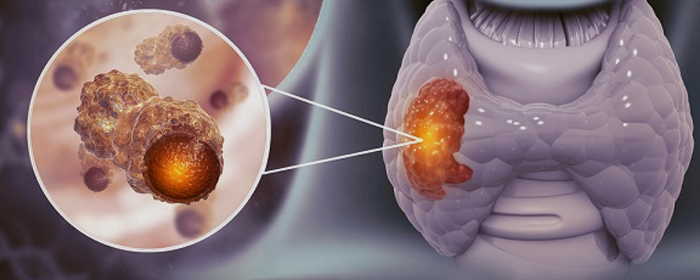Services
Thyroid Surgery

A thyroidectomy is the surgical removal of all (total thyroidectomy) or part (partial thyroidectomy) of your thyroid gland — the butterfly-shaped organ in your neck.
Thyroidectomy is the main surgical treatment for thyroid cancer and is a treatment option for certain thyroid conditions, including:
Thyroid nodules: A thyroid nodule is a growth (lump) of thyroid cells in your thyroid gland. Thyroid nodules are usually benign (noncancerous), but they can be malignant (cancerous). Sometimes, thyroid nodules can produce excess thyroid hormone, which causes certain symptoms.
Goiter: Goiter is an enlarged thyroid gland with or without thyroid nodules. If it grows large enough, it can put pressure on your trachea or food pipe (esophagus) and make it more difficult to breathe and swallow.
Hyperthyroidism: Hyperthyroidism (overactive thyroid) is a condition in which your thyroid creates and releases more hormones than you need. It has several causes, and surgery is one of the treatment options for the condition.
Types of thyroid cancer include:
Papillary thyroid cancer
Follicular thyroid cancer
Medullary thyroid cancer (MTC)
Anaplastic thyroid cancer
Primary thyroid lymphoma (surgery is limited to obtaining a tissue biopsy).
Metastasis to the thyroid from cancer elsewhere in your body (most commonly renal cell cancer and lung cancer).
What are the types of thyroidectomies?
There are two main categories of thyroidectomies: Total and partial.
1) Total or near-total thyroidectomy :
A total or near-total thyroidectomy is the surgical removal of all or most of your thyroid tissue. The type of thyroidectomy you need depends on the reason for the surgery. For example, if you have a nodule on one side of your thyroid, you may need a hemithyroidectomy to remove the affected lobe. If you have a large goiter or a large cancerous tumor, you’ll likely need a total thyroidectomy.
2) Partial thyroidectomy :
Hemi-thyroidectomy or thyroid lobectomy: The surgeon removes one lobe (one half) of your thyroid.
Isthmusectomy: The surgeon removes the thyroid tissue between the two lobes (thyroid isthmus). Surgeons perform this surgery specifically for small tumors that are located in the isthmus.
Open thyroid biopsy: In this operation, the surgeon removes a thyroid nodule directly. Surgeons rarely perform this surgery.
When would I need a thyroidectomy surgery?
Your healthcare provider may recommend thyroidectomy for any of the following reasons:
You have a nodule (growth) on your thyroid that might be thyroid cancer
You have a diagnosis of thyroid cancer
You have a large nodule or goiter that’s compressing your trachea or esophagus and making it difficult to breathe or swallow
You have a nodule or goiter that’s releasing excess thyroid hormone, resulting in hyperthyroidism, and it’s not responding to other treatment options.
What happens during a thyroidectomy surgery
Before your surgery, an anesthesiologist will give you general anesthesia to relax your muscles, prevent pain and make you fall asleep. Your healthcare team will also place a breathing tube down your throat for the procedure.
During a thyroidectomy, there are a few ways your surgeon can access your thyroid, including:
Through a standard incision in your neck.
Through a smaller incision with the help of a video camera (minimally invasive video-assisted thyroidectomy).
With the assistance of a robot through a distant incision in either the axilla (the space below your shoulder through which vessels and nerves enter and leave your upper arm) or the back of your neck
Depending on your situation, your surgeon will remove:
Part of your thyroid (lobectomy).
Most of your thyroid (near-total thyroidectomy).
All of your thyroid (total thyroidectomy).
During surgery for a thyroid cancer diagnosis, your surgeon may sample lymph nodes around your thyroid gland. If found, a pathologist will check the lymph node sample during surgery for evidence of thyroid cancer. If they find cancerous cells, your surgeon may also remove nearby lymph nodes in your neck.
Once your surgeon is done, they’ll close the incision with stitches (sutures).
Surgery to remove your whole thyroid may take up to four hours. It may take less time if your surgeon removes only part of your thyroid.
What to Expect?
Once you have recovered from anesthesia and are fully awake, you’ll likely be able to have something light to eat and drink.
Your throat may be sore due to the breathing tube your healthcare team placed during the surgery. You may also have a small tube (catheter) in your incision to help drain blood and other fluids that build up. Your surgeon will remove the drain one or two days after the surgery.